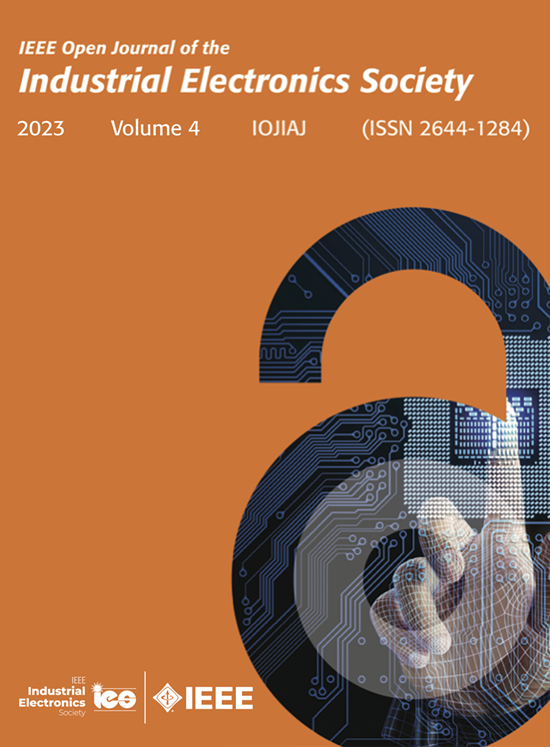基于bilstm网络的重复脉冲电压激励下局部放电特性研究
IF 4.3
Q1 ENGINEERING, ELECTRICAL & ELECTRONIC
IEEE Open Journal of the Industrial Electronics Society
Pub Date : 2025-09-10
DOI:10.1109/OJIES.2025.3607636
引用次数: 0
摘要
本文提出了一种新的方法来检测电机绕组绝缘系统在重复脉冲电压激励下的局部放电(pd),这种情况与传统的正弦激励有本质的不同,在现有的研究中很少涉及。传统的局部放电检测方法在50/60 Hz正弦波激励下有效,但由于电力电子器件开关瞬态的强烈干扰,在这种情况下面临重大挑战。大多数现有方法依赖于带有超高频高通滤波器(通常在500 MHz左右)的天线来抑制开关噪声,但这通常会导致低频PD信息的丢失,并导致较低的检测灵敏度。此外,基于天线的检测需要移除设备外壳以避免电磁屏蔽,这使得它只适用于实验室研究,而不适用于工业监测。相比之下,该方法通过电测量电路检测PD信号,并应用双向长短期记忆网络滤除开关干扰,使PD检测在100-500 MHz范围内,无需侵入性程序或需要超高频滤波器。实验分析表明,局部放电事件主要发生在开关边缘,对激励波形瞬态高度敏感。较短的上升时间导致更少但强度更高的放电事件,而较长的上升时间导致更频繁但强度更低的放电。占空比也影响PD分布和放电功率。用空间电荷理论解释了实验结果。所提出的方法可以进一步完善,以用于未来的在线或离线PD监测。本文章由计算机程序翻译,如有差异,请以英文原文为准。
Partial Discharge Characteristics Under Repetitive Pulsed Voltage Excitation Using BiLSTM-Based Networks
This article presents a novel approach for detecting partial discharges (PDs) in motor winding insulation systems subjected to repetitive pulsed voltage excitation, a scenario that is fundamentally different from conventional sinusoidal excitation and has been rarely addressed in existing research. Traditional PD detection methods, effective under 50/60 Hz sine wave excitation, face significant challenges in this context due to strong interference from the switching transients of power electronic devices. Most existing methods rely on antennas with ultrahigh frequency high-pass filters (typically around 500 MHz) to suppress switching noise, but this often leads to the loss of lower frequency PD information and results in lower detection sensitivity. Moreover, antenna-based detection requires removing the equipment enclosure to avoid electromagnetic shielding, making it suitable only for laboratory studies and impractical for industrial monitoring. In contrast, the proposed method detects PD signals through the electrical measurement circuit and applies a bidirectional long short-term memory network to filter out switching disturbances, enabling PD detection in the 100–500 MHz range without invasive procedures or the need for ultrahigh frequency filters. Experimental analysis reveals that PD events predominantly occur at the switching edges and are highly sensitive to excitation waveform transients. Shorter rise times lead to fewer but higher magnitude PD events, while longer rise times result in more frequent and lower magnitude discharges. The duty cycle also affects both PD distribution and discharge power. Space charge theory is used to explain the experimental results. The proposed approach can be further refined for future online or offline PD monitoring.
求助全文
通过发布文献求助,成功后即可免费获取论文全文。
去求助
来源期刊

IEEE Open Journal of the Industrial Electronics Society
ENGINEERING, ELECTRICAL & ELECTRONIC-
CiteScore
10.80
自引率
2.40%
发文量
33
审稿时长
12 weeks
期刊介绍:
The IEEE Open Journal of the Industrial Electronics Society is dedicated to advancing information-intensive, knowledge-based automation, and digitalization, aiming to enhance various industrial and infrastructural ecosystems including energy, mobility, health, and home/building infrastructure. Encompassing a range of techniques leveraging data and information acquisition, analysis, manipulation, and distribution, the journal strives to achieve greater flexibility, efficiency, effectiveness, reliability, and security within digitalized and networked environments.
Our scope provides a platform for discourse and dissemination of the latest developments in numerous research and innovation areas. These include electrical components and systems, smart grids, industrial cyber-physical systems, motion control, robotics and mechatronics, sensors and actuators, factory and building communication and automation, industrial digitalization, flexible and reconfigurable manufacturing, assistant systems, industrial applications of artificial intelligence and data science, as well as the implementation of machine learning, artificial neural networks, and fuzzy logic. Additionally, we explore human factors in digitalized and networked ecosystems. Join us in exploring and shaping the future of industrial electronics and digitalization.
 求助内容:
求助内容: 应助结果提醒方式:
应助结果提醒方式:


